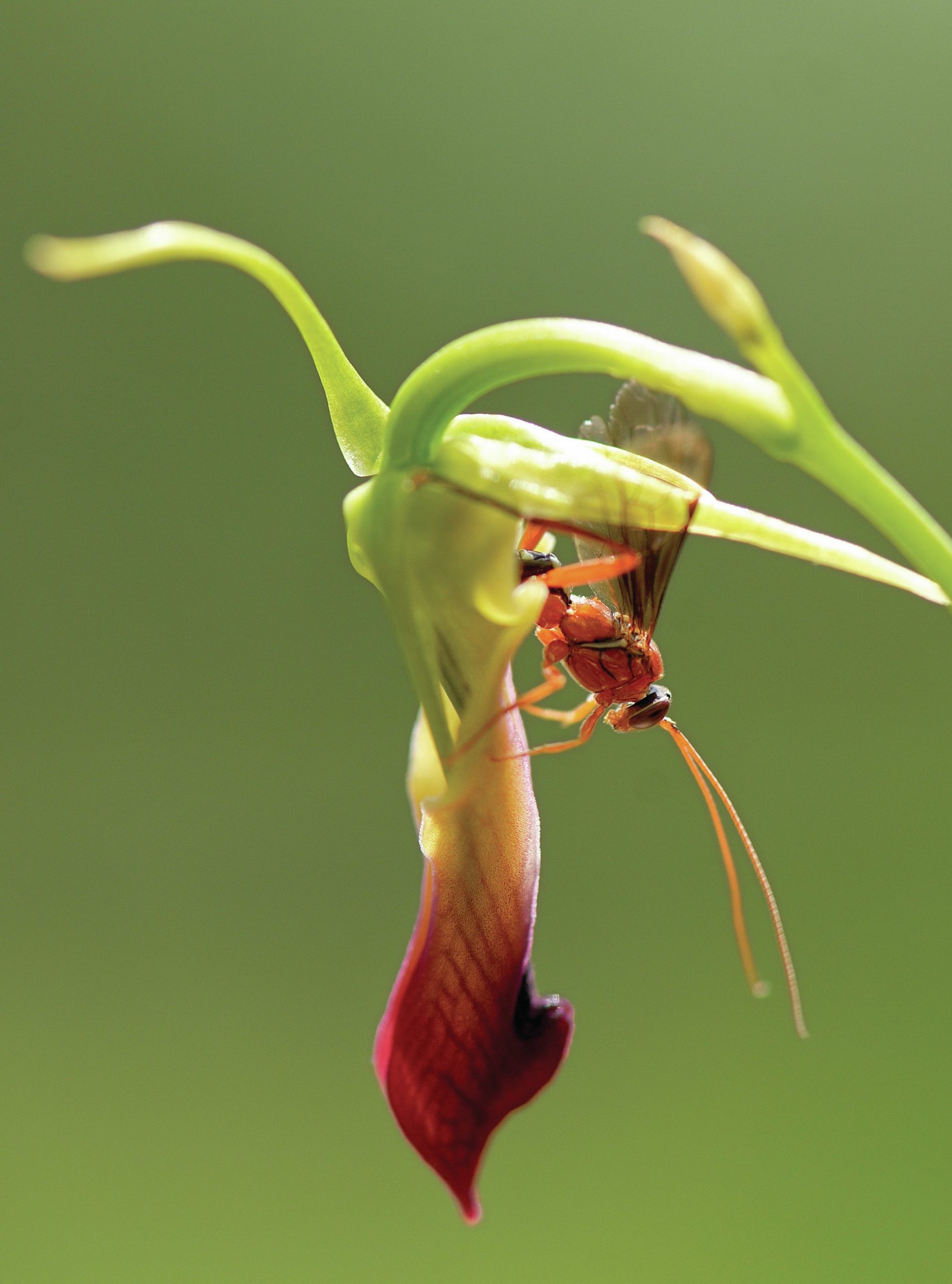
Reproduction of the large tongue orchid (right) is a complicated ‘affair’. The plant employs mimicry of the female dupe wasp (below). To a male wasp, the orchid’s flower looks just like a female dupe wasp and the flower secretes a chemical so similar to the wasp’s sex pheromone that male wasps attempt to mate with it. The exertions of the male wasp result in pollinia sticking to its body. The male wasp will then fly off and when it attempts to mate with another ‘female wasp’ (flower), it will deposit some of the pollen — thus becoming a vector for the plant’s pollination. The male wasps are often so convinced by the mimicry that they ejaculate, which has been shown to increase pollination success rate.
But what about the insects? With the wasps being duped by the mimicry to the extent that they waste sperm, you might expect this to put the wasp’s species at an evolutionary disadvantage because its reproductive efficiency would be reduced. However, wasp reproductive biology is not like our own mammalian reproduction. In dupe wasps, unfertilised eggs can hatch. They produce male offspring — all the better for the orchids! Fertilised eggs produce female offspring. The males are haploid (n), the females are diploid (2n). This means that females are able to produce offspring despite a lack of sperm. As long as some females’ eggs are fertilised, the survival of the species is not at risk.
Your organisation does not have access to this article.
Sign up today to give your students the edge they need to achieve their best grades with subject expertise
Subscribe




